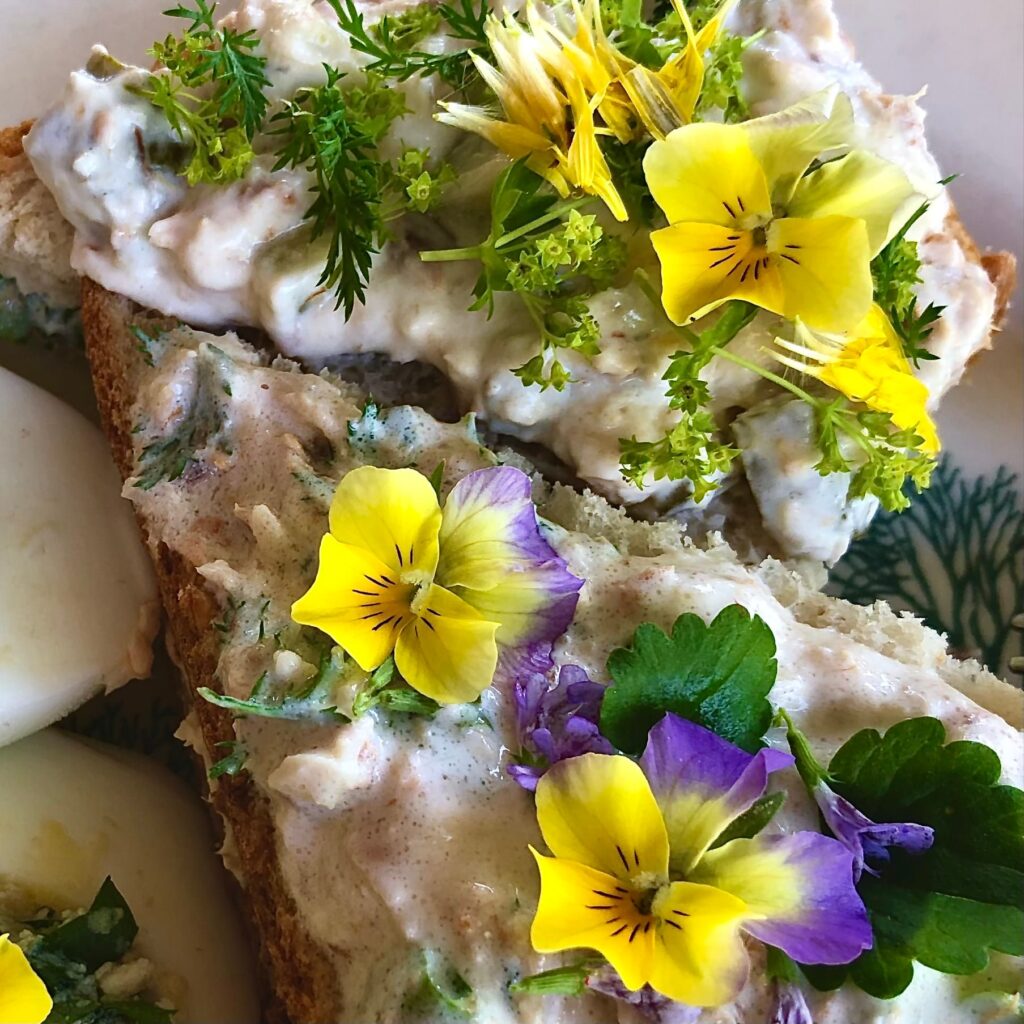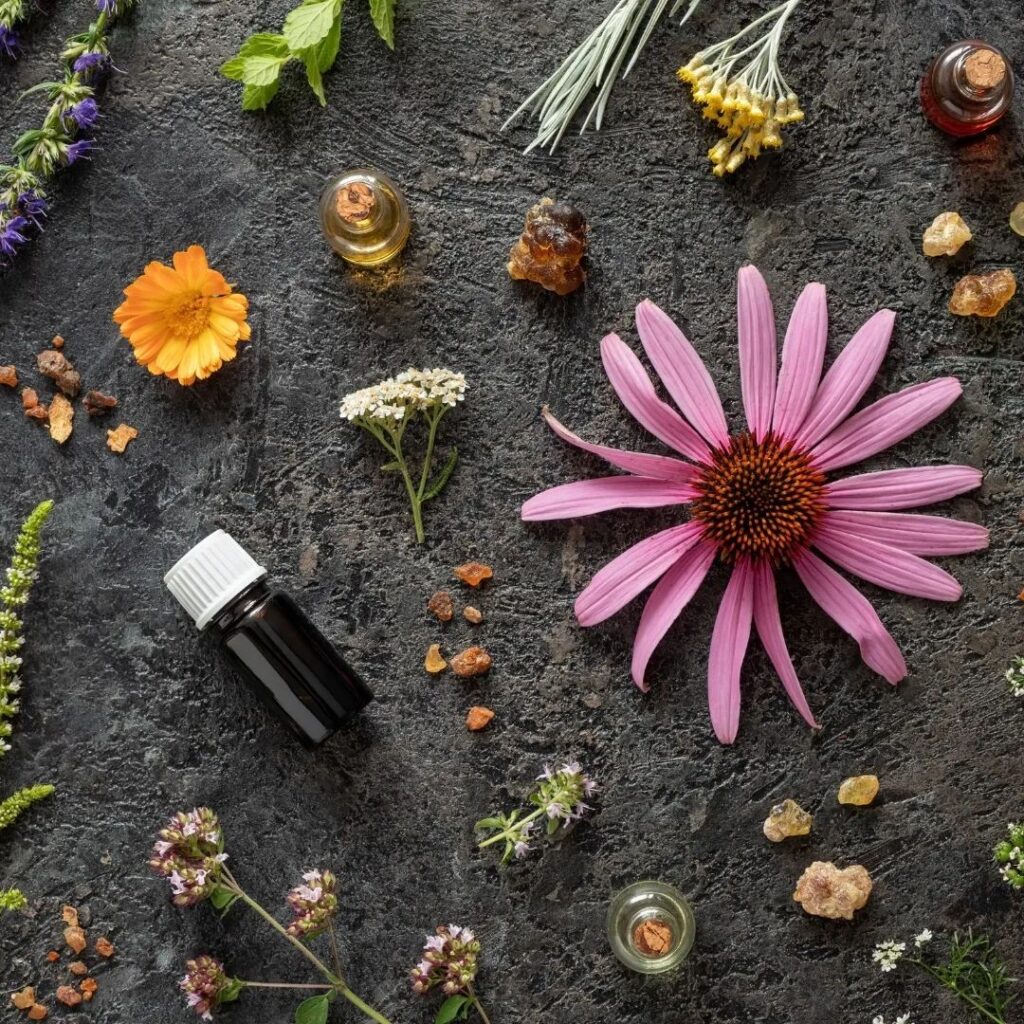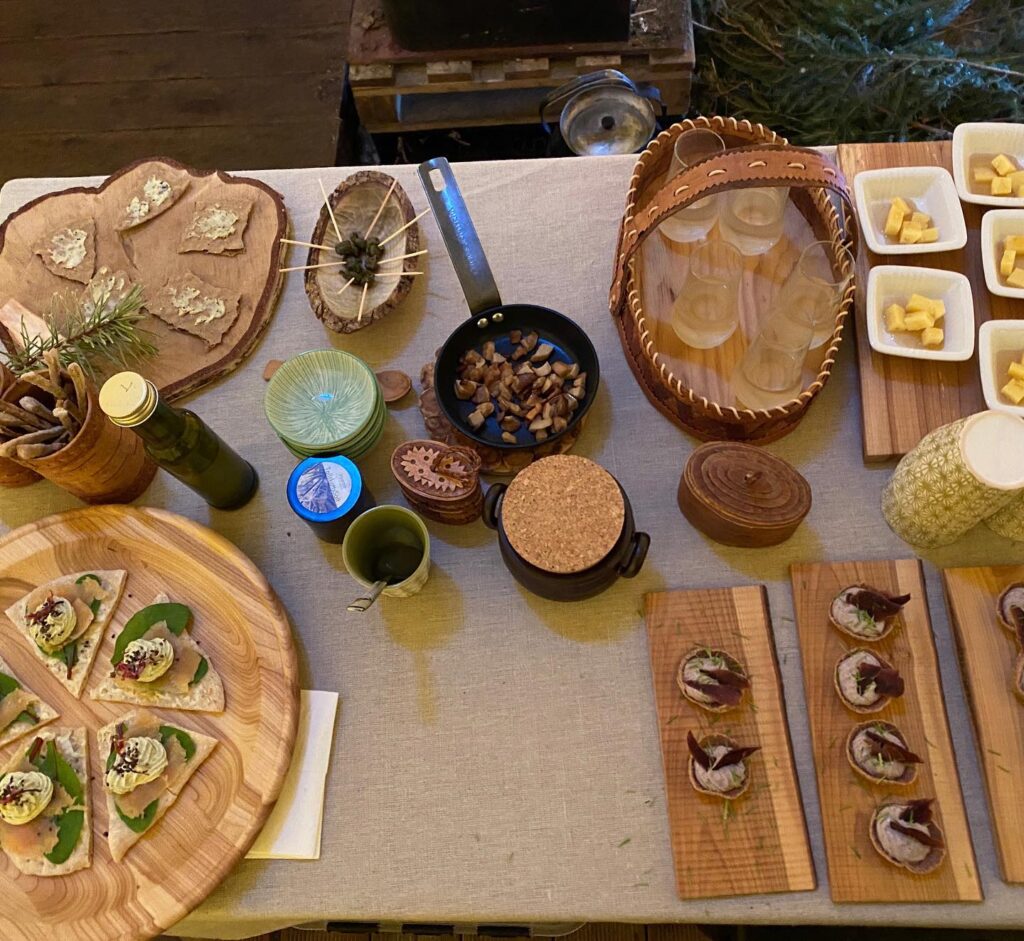I grew up in a forested region in Poland. My parents knew many great places to go mushroom or berry picking. I’ve never gained their knowledge but i enjoyed the foraging a lot. It is not only a skill to collect the local treasures but also a symbol of the heritage and cultural identity. Many families from my region still harvest the seasonal delights and sell them on the local farmers market.
I always admired and the connection Nordic people have with nature. There is something incredibly relaxing in the crunching snow underfoot and the scent of pine needles. You’re not rushed, allowing you to take in all the smells and sounds surrounding you. Additionally, I believe you feel content afterward, having completed a mission.
In this article I will highlight the most recommended spring foraging experiences you can join in Nordic countries. During the guided foraging experiences such as wilderness tours, workshops and nature walks you will learn about the local editable plants of the season. They also teach about your rights and obligations as forager which may vary in Norway, Finland and Sweden.
The Wellness Benefits Of Foraging
“In the silent language of the woods, foraging becomes a dialogue between the seeker and the sought, a dance where gratitude is the rhythm.”
Engaging in foraging has become widely favored as an outdoor pursuit that promotes walking among natural surroundings, thereby enhancing mental well-being through the alleviation of stress, anxiety, and depression. Learning foraging skills will also boosts confidence and a sense of accomplishment and confidence.
Many winter greens, berries, and nuts gathered on your walk are rich in nutrients, making them excellent superfoods or top-quality harvests. Foraging promotes local and seasonal eating, resulting in fresher, tastier meals and a deeper bond with nature
Foraging teaches sustainable time management, benefiting from nature while minimizing harm. It involves taking only what’s necessary, leaving enough for natural regeneration.
The Favourite Wild Edibles of the Nordic spring
During spring, the landscape bursts with a variety of flowers and shoots for foraging, each favored by Nordic people based on their region and climate. Here are the top edible greens to forage in Nordic winters.
Flowering plants:
- Maple Flowers (Acer Platanoides) provide beautiful salad greens. They don’t have much taste but it gives a lot of esthetic benefits to your meal.
- Violets (Viola riviniana) will bring a lot of elegance to your desserts.
- Dandelion flowers (Taraxacum officinale) are delightful in salads, baked goods or teas.
- Fresh leaves of Willowherb / Rosebay / Fireweed (Chamaenerion angustifolium) can be used in salads, while dried and ground roots serve as an alternative to flour.
- Yarrow (Achillea Millefolium) can be foraged from early spring to early winter. Historically utilized for its medicinal properties in wound healing and blood clotting, this bitter, aromatic herb can also enhance culinary dishes in moderation.
Leaves:
- People add Common Sorrel (Rumex acetosa) leaves, which have a sour, slightly citric taste, to salads, infusions, and dressings. Farmer’s markets often offer them as seasonal products.
- In spring, you can eat the young Birch (Betula) leaves raw or use them to make tea.
Roots:
- Formerly, people used the sweet root of Angelica (Angelica Archangelica) as candy, while they used the dried leaves for tea.
Other plants:
- In winter, Juniper, including its needles (Juniperus communis) and berries, can be readily found across Norway. The branches are ideal for smoking foods like juniper-smoked salmon (Røkt Laks), while the dark blue berries, rich in sugar, are perfect for making jam or juice. Green berries are employed in gin flavoring, and blueberries can be paired with meat or used to season potatoes.
- In late winter or early spring, gather young Norway spruce tips (Granbar). They possess a citrusy flavor and are suitable for preparing tip syrup or infusing oils.
- You can find Red Pines (Pinus sylvestris) all year round. Use the soft shoots to make a pine needle tea (Pinus sylvestris) and drink it with sugar or honey.
- Spruce cones (Picea abies) are used for desserts and savory dishes, syrups, jellies and teas.
Mushrooms:
- Chanterelles (Cantharellus cibarius), cherished wild mushrooms in Finland, are typically gathered from August to September. Fry them in butter or incorporate them into omelettes for a delightful taste. Funnel chanterelles, harvested in colder seasons, emit a more potent aroma and are commonly fried for use in meat stews or sauces.
- Chaga Mushrooms (Inonotus obliquus) lack a cap or stem and thrive primarily on older birch trees, often found at their edges or in clearings. Historically, people have valued Chaga for its medicinal properties, which include regulating blood sugar, supporting heart health, and enhancing immune function. Typically, people consume it as a tea or in powdered form, traditionally using it for its healing benefits.
Spring Foraging Walks And Workshops
Naturalists and biologists often guide the most recommended wilderness walks. They are not only knowledgeable but also passionate about nature and its gems.
Nature walks in an ancient arctic Finnish forest
A family-run business of biologists, At Nature is based in the arctic Muotkatunturi in Lemmenjoki National Park. They offer nature walks in English in an ancient forest and mire starting from May. You will learn to identify Lapland superfoods and enjoy birdwatching.
In the summertime they organise the group berry or mushroom foraging. The walk ends with open-fire tea and tasting local snacks. According to the reviews of visitors the experience is unique mainly because of the passionate hosts who know all about Lapland’s fauna and flora and who share this passion with others.
Many of the visitors combined the walk with a stay at the small LapinTintti Eco-Cabin just outside of Inari. It’s a wooden cottage located in front of a lake, in an incredible quiet and secluded place, surrounded with amazing views. You will get a sauna experience after a cold day, the visit of squirrels and reindeer and the peace that you were looking for.
Discover Finnish wild plants with nature coaching
A guided wild herbs collector training is possible with Vihreat Tassut, the nature coach in Forssa, near Tampere. During those walks and workshops the guide will discuss the edible, wild Finnish plants. You will discover proper techniques in identification, in everyday cooking and preparing healthy drinks.

Guided wild food walks and workshops on small islands near Helsinki

The biologist and herbalist from Northern Espoo, Anna Nyman, leads herb foraging walks on the small islands of Seurasaari and Mustikkamaa near Helsinki from May to August. Participants experience a unique adventure, discovering the health benefits and flavors of wild-growing plants. The walks include tasting and smelling various plants.
Additionally, the biologist offers workshops on making wild tea, herbal saunas, and wild cosmetics. Participants learn natural ways to enhance their well-being in the midst of nature. Anna also shares the history of local plants and their significance in Finnish folklore.
A highlight of the experience is the wild food cooking workshop, where participants learn vegetarian recipes and experience unique flavors and cooking methods.
Guided walks, taste tours in Swedish Lapland

The rules of foraging in Sweden are similar to Finland. You can legally pick passing between forests and farmland. This excludes the area within 50 meters from houses and public gardens. Many experienced foragers recommend old forests in the southern Sweden such as Tividens Nationalpark and Svartedalens Naturreservat.
If you wish to get more insights into traditional foraging practices, connect with local Sami communities in the Jokkmokk area. Sami people demonstrate a deep connection with nature, and their valuable foraging practices are well-known. Jokkmokk is a natural meeting place for Sámi people from all over Sápmi. Every year the city hosts The Jokkmokk Winter Market (Jokkmokksmarknad), celebrating the traditions, crafts, and lifestyle of the Sámi people. The event starts on the first Thursday in February.
There is also an opportunity to join small workshops and guided nature and culture walks all year filled with green flavors foraged in the wild. Eva Gunnare, based in Swedish Lapland arranges taste shows, guided flavor tours and treasure hunts. She also organises private tours with an indoor activity in her kitchen where she prepares some homemade treats.
Kitchen on the Lofoten’s edge
Let’s move to one of the most stunning destinations of Norway, Lofoten. Ingunn Rasmussen, who grew up in Lofoten, runs the family-owned business Holmen Lofoten. She created a home to a luxury accommodation and a range of adventures. Located on the shores of a small fishing village of Sørvågen in the former fishermans’s cabins, offers outstanding water views through the panorama windows.
Ingunn offers to her guests a set of shared adventures called Kitchen On The Edge Of The World. Within this program you can book a 4-nights stay combined with craft indoor or outdoor workshops. The founder is promoting a concept of sustainable eating that she integrates into the workshops. It can be hard to import food from the mainland therefore it’s important to learn how to live sufficiently. Locally forage food and preserve it throughout the year. She works with local suppliers and farmers to prepare the finest meals from the local ingredients.
Beginner tips for foraging
These are the basic tips to get you started foraging for wild food I have learned from experienced foragers:
- Always prioritize safety, and never eat any wild foods without being absolutely certain of its identity.
- Practice sustainable foraging. Only take what you need. Read guidance on how to properly cut plants or mushrooms. Bring reusable containers.
- Engage in foraging with all your senses not just the visual side of how something looks like. You want to rub it, smell it, taste the flavour.
- It’s cold outside! Consider contacting local foraging groups, join workshops, or check guidance from experienced foragers in your area.
- Check the official websites of the National Parks. They often provide information about the events, workshops and guided tours in the current season.
- Consider picking local and unique fruits such as cloudberries in Finnish Lapland
